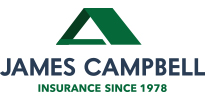Know What You Have and What It’s Worth
Before you can even determine what the value of your collections might be, you need to know what you have, and it’s always a good idea to have an inventory of your belongings for insurance purposes.
If you do find yourself needing to make a claim, you can streamline the process because you’ve determined your ideal coverage from the outset.
Even without unique collectibles and collections, creating a comprehensive home inventory list can be a daunting task. It could take several different forms — a written list, a video tour of your home, or a series of photos. No matter what you’re trying to inventory, start small and group common things together.
If you’re not sure where to start, pick a room, but you want to be comprehensive, so once you’ve recorded everything in your primary residence be sure to add any valuables in a storage unit or shed.
For collectors, it makes sense to start where you store your valuable items — woodworkers likely have all their tools where they do their work, as do hobbyist mechanics. In some cases, a detailed spreadsheet can make a lot of sense.
The good news for many collectors of nostalgia there’s probably an app that can help you inventory your baseball cards, comic books, Lego and other childhood toys.
No matter what tool you use, the goal is to be thorough — the more information, the better, so include specific serial numbers, proofs of value such as receipts with dates, or appraisals. Be sure to back up your list to a secondary site by either making physical copies or having a digital copy in the cloud.
Does Your Collection Exceed Your Home Insurance Policy’s Limit?
The most important thing to remember is that you’re itemizing these valuable collections because they exceed what you a typical home insurance policy might cover, and ultimately as a collector seeking adequate insurance coverage you want to establish a specific replacement value. In some cases, it may make sense to have your collection formally appraised by a certified expert.
Never assume your home insurance policy covers your collections — most place limits on home contents coverage. Whatever you collect or why, you should seek specialized coverage to adequately cover their value, either as an addition to your existing policy or through a provider that specializes in insuring collectibles and other rare items.
